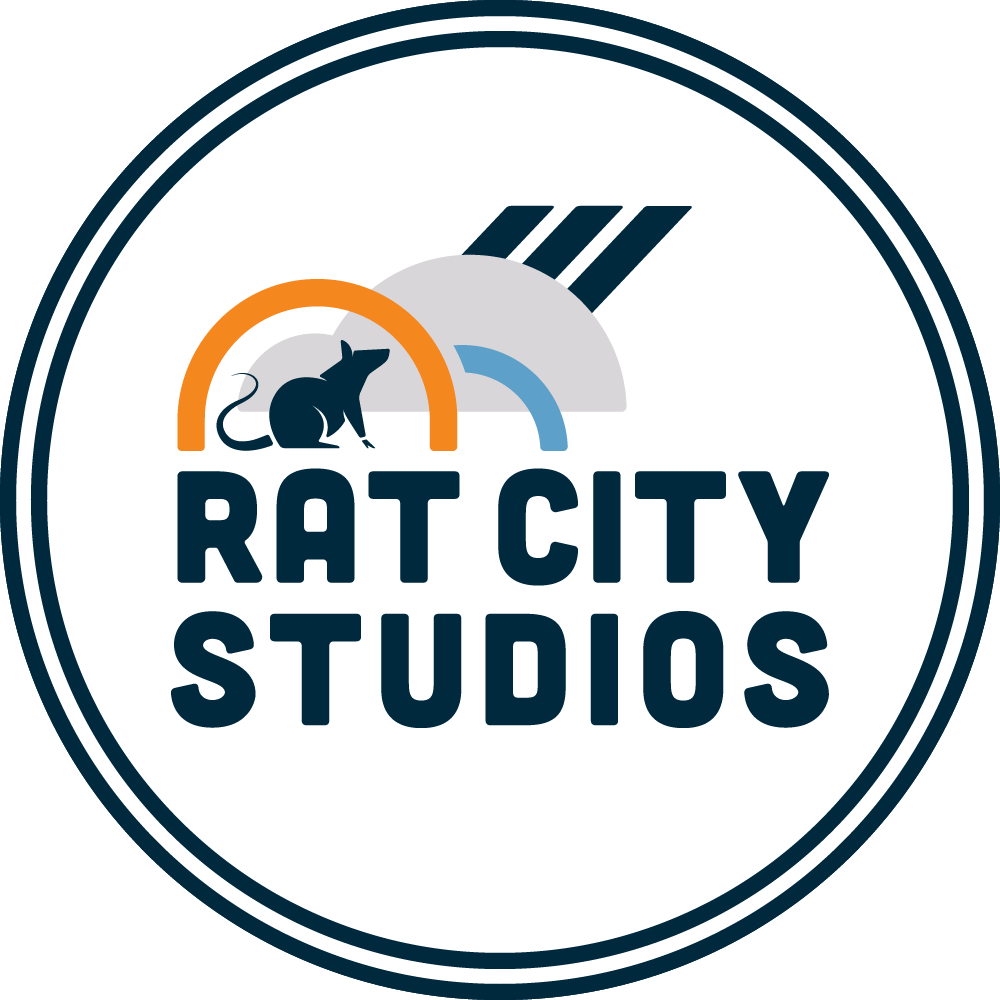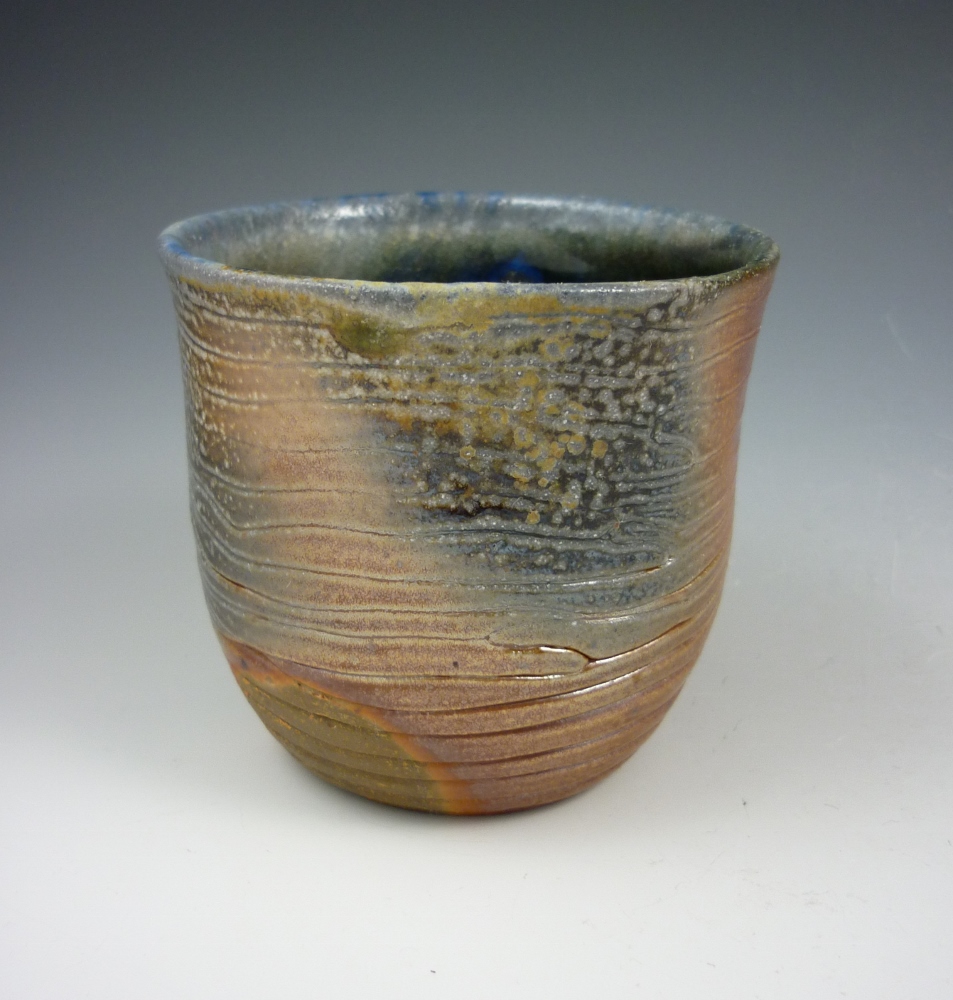Q&A with Ann Marie Cooper as Good Earth Pottery Turns 50!
/located in Fairhaven, WA
Q: Is Good Earth your identity?
How do you separate yourself from the face of your business - or do you ?
This question makes me chuckle, because years ago, when I was only a couple of years into working at Good Earth Pottery, I went to a gathering of clay people--most of whom I didn't know and were 20-30 years older than me-- and a woman came up and asked me "Are you someone's daughter?" One of the two women in the room that I knew jumped in with great indignation and proclaimed, "Are you kidding? She's Good Earth Pottery!"
Bellingham is a smallish city, and as the owner of a well-known business, I do have to stay aware of what I do and say around town. That being said, I wouldn't say Good Earth is my complete identity. I can't and don't want to separate myself from it, but Good Earth is one of my two businesses. I'm also Kulshan Clayworks, which is the name of my personal studio; many people know me and my work from Instagram, as @annieoclay, and there are lots of folks around town who call me "The Pottery Lady."
Q: You have an amazing smile and we see it a lot. How do you stay upbeat?
Aww, thanks. I do have my down days like everyone else, but you guys always see me in my happiest settings: surrounded by my clay community. It sounds unreal, but I can't contain the happiness that clay has brought into my life, and I love to share that with others. It's an infectious joy.
Q: In what other ways are you building the clay community?
Community is incredibly important to me, and I have a tendency to get very involved. I teach at local elementary schools, to ignite the clay passion in the next generation. And several years ago I co-founded Whatcom Artists of Clay & Kiln (WACK), with a mission to promote clay culture in Whatcom County(where I live). We meet monthly to share our clay thrills and challenges, and to organize events to engage with the greater community to foster appreciation of our ceramics-rich region. We have an Empty Bowls event every year, and have twice held "Clay Extravaganza," a festival of clay with vendor booths and artist demonstrations.
I've also taken an active role in the Washington Clay Arts Association since I joined in 2012, and this year I brought that together with Good Earth Pottery by hosting a juried teapot show featuring work from WCA members (image below) throughout the state. Simon Levin was kind enough to be our juror, and it was a splendid show. People came from all over to see it. We're going to do it again next year (juror announcement soon!). I really like bringing in guest artists on occasion--I think it's beneficial to everyone to spice things up a bit. It gives people outside our normal jurying range an opportunity to display to a new audience, while simultaneously drawing a new audience our way, thus further building our clay-making and clay-appreciating community.
If you did not work in clay, what media would you be drawn to?
I've always been drawn to creative writing.
What drew you into your coil building technique?
I'd been wheel-throwing for a couple of years, and then took a one-day workshop with Patricia Morse, a Bellingham artist who specialized in coiling. That workshop changed my life. I sold my wheel and put all my energy into coiling. Before clay I was an avid knitter. I think the texture and designing of coils fuses my passion for knitting and clay, with coil-building offering more freedom. I love the organic nature of it, the abounding ways to use it, and the element of surprise that comes at the end.
Soda-fired Drink Set
bird bowl
wood-fired Cup
How do you juggle having a family when you are also running a business?
It's definitely a challenge. I have to make difficult choices and sacrifices. Currently, I work only 2-3 days a week in the gallery, and I have my personal studio at home, which helps me be more engaged with and accessible to my family. I had a studio upstairs from Good Earth for a couple of years, but it kept me away from home and studio too much, which wasn't good for any of us. Working at home helps me be more productive with my family and my clay work. Next year I'll be working more days in the gallery, which will make the balancing act more interesting, but my studio will stay at home.
How long have you worked in clay? How did you learn to work with clay?
I had my first taste of clay during my last semester of high school. I wanted more, but had to wait a long time (15 years) before my next helping. The university I attended didn't allow non-art majors to take ceramics classes, and after college there wasn't time or opportunity to pursue pottery--until I began working at Good Earth in 2009. Surrounded by the amazing pots and ceramics community, I knew my time to get back into clay had finally come. I tapped into the knowledge base of my new friends, enrolled in throwing classes at Whatcom Community College, eventually bought a wheel and a kiln from a couple of the potters I knew from Good Earth, and then I just kept at it. I began coiling in 2011, so it's been about 7 years since I found my voice in clay.
What led you to take on this huge commitment of managing Good Earth? And when did you start working at Good Earth? Give us a short history of the organization...
I was hired by Good Earth in September of 2009 for my sales and marketing experience. I knew one of the owners (Linda Stone) from representing her work in a gallery I'd managed years ago in LaConner. Linda had discovered that my family had recently moved to Bellingham and hunted me down to offer me a job--right when I had commenced my own job hunt (kismet!). I'm so glad she did! I'm eternally grateful for the positive, life-changing effect that Linda has had on my life.
Grouping of work by different showcased artists
Good Earth was started in 1969 as a hippie cooperative, a functioning clay studio with a small dusty gallery up front. It eventually became privately owned and has cycled through several owners/teams of owners through the years. Somewhere in the middle of its existence, the studio was eliminated, and the space redone as strictly consignment gallery space--although we still have a gas kiln on site (for which I have some plans). In 2016, Linda Stone decided to retire and offered to sell me her half of the business. I felt no hesitation in accepting her offer--remaining partner Deb Martin and I work really well together, and being part of Good Earth has made me the person I am today, I can't imagine my life without it. At the end of this year, I'll be buying out my business partner, Deb Martin, when she retires(after 15 years of ownership). 2019 is Good Earth Pottery's 50th anniversary, my 10th anniversary working here, and my first year as full owner, so it'll be an exciting time. This place means the world to me, and I hope I do it justice in its further evolution.
What does Good Earth focus on in its offerings to the community?
Good Earth focuses on locally handmade, high-quality ceramics. We currently represent about 45 ceramic artists--both functional and sculptural. Every artist display has a photo of the artist and an artist statement so the buyer can get to know the individual behind the work and appreciate what went into each piece. We also provide a small handout of this information with purchase.
What tools do you use to organize your business?
Quickbooks is my best friend. I do all of the bookkeeping, so one of the first big changes I made when becoming owner was to upgrade the bookkeeping software. It was a huge undertaking, but so worth it.
I
When selecting artists to showcase in the gallery, what are three things you look for?
1. Proximity: we've always specialized in local artists. Our guideline used to be "within a 50 mile radius of Bellingham," although we've recently stretched that out to "within a 70 mile radius." (We also continue to represent a few people who've moved outside the area.)
2. Variety: we want to offer our customers a wide selection of styles, because not everyone likes the same thing.
3. Quality: we don't sell seconds in the gallery. We have high standards for finished works, and our clientele appreciates knowing that that they can trust what they purchase from us.
How are you celebrating Good Earth's 50 year anniversary?
I'm still working on some ideas, but I can definitely say I'm going to celebrate our history. I'm currently on the hunt for stories and mementos of the past to share through our website, social media and email list. I also want to have a party, but I'm not yet sure when or what that looks like.
How do you intend to grow Good Earth in the near future?
I have many ideas swirling in my head all the time these days, but I'm not quite ready to share them yet. Stay tuned....
What grand goal do you see on the horizon in Good Earth’s next 50 years?
My grand goal is to build greater awareness that we're here. Good Earth has a lot to offer; our area has so many talented artists, I want people outside the region to know about us. I'm super appreciative of Rat City Studios for helping me with this.
WCA Teapot Artists exhibiting in the exhibition hosted at good earth - (Left to right) Jeremy Noet, Eliane Medina, John Brooks, Brenda Lovie, Ken Turner, Kristen Ballou, Jane Schupay, Levi Vincent; GEP Grouping- pots by Larry Richmond, Isaac Howard, Ann Marie Cooper, & Deb Martin












